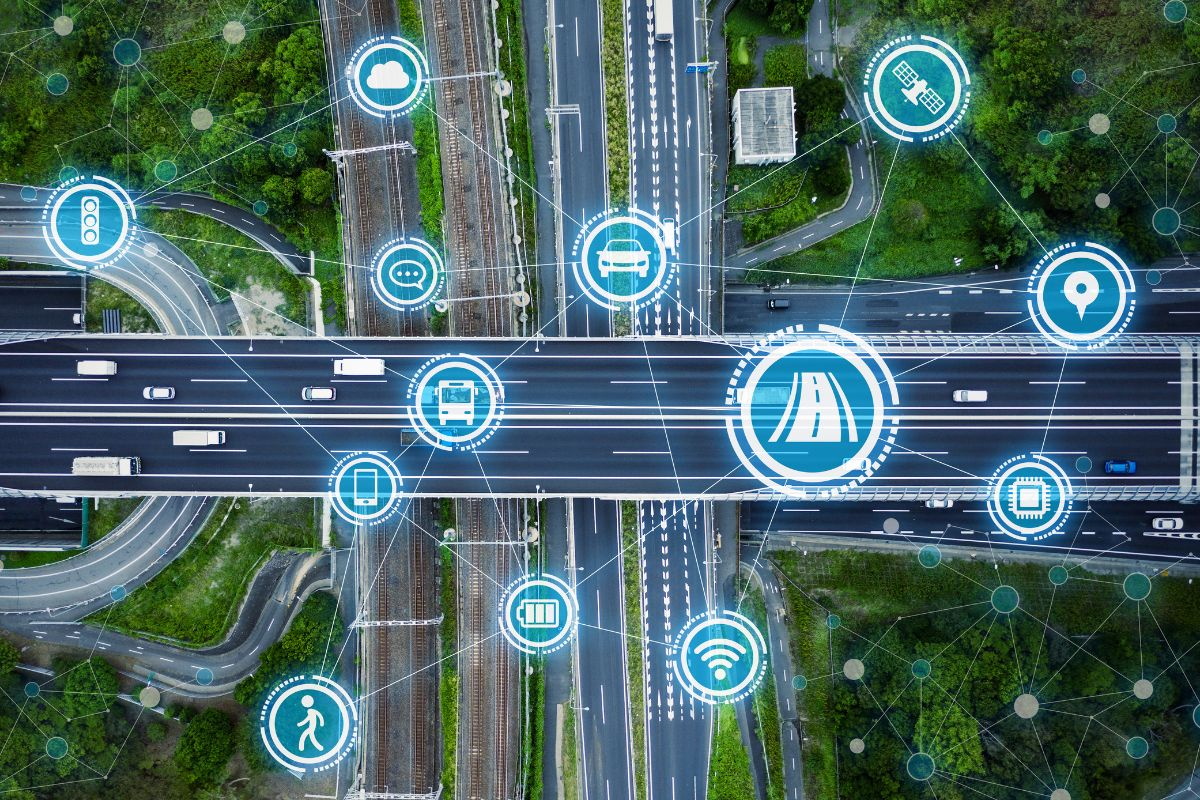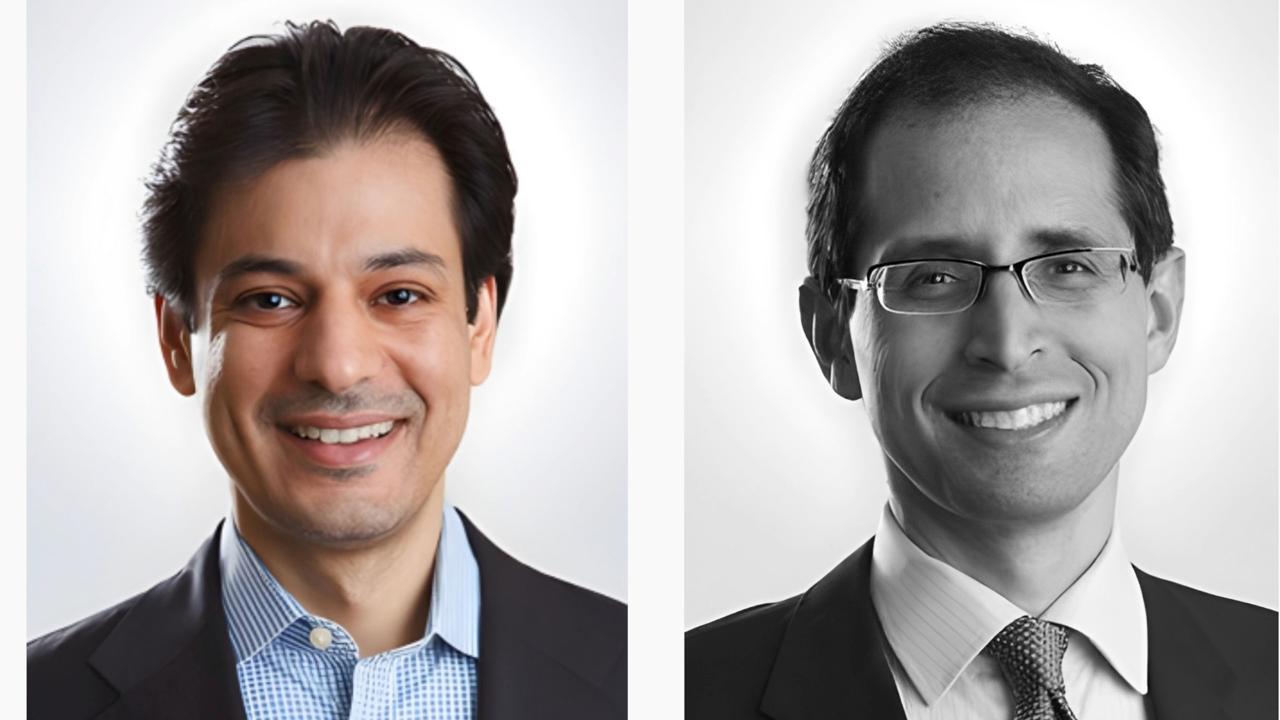World
The Critical Role of OpticSense in US Infrastructure

Economic growth in the United States relies on a vast networkof roads, bridges, water systems, railways, airports, high-speed internet access, and power grids. Much of this infrastructure has exceeded its intended lifespan, and the costs associated with upkeep are skyrocketing.
Among developed nations, the World Economic Forum rates the quality of US infrastructure as 13th. In fact, the American Society of Civil Engineers reveals that over 45,000 of the country’s bridges and 1 in 5 miles of its roads are in poor condition.
Fortunately, Huvr has introduced a cutting-edge means of monitoring infrastructure in real time. This comprehensive monitoring is designed to save money and keep people safe.
Why critical US infrastructure is failing
Much of the country’s infrastructure was built during the mid-20th century, and these structures are now reaching the end of their design lives. Along with the effects of natural aging, there has been a chronic underinvestment in infrastructure maintenance and upgrades. Public investment in the nation’s critical infrastructure has decreased by over 40 percent since the 1960s, and estimates suggest trillions of dollars are required to bring it up to acceptable standards.
The increasing frequency and severity of natural disasters — including hurricanes, floods, and wildfires — exacerbate the vulnerabilities of already fragile infrastructure. A quickly growing population also places additional stress on infrastructure systems that were not designed to handle the loads they do today.
Advancements in artificial intelligence AI and fiber optics for real-time monitoring
The convergence of artificial intelligence (AI) and fiber optic interferometer (FoRI) technology heralds a new era in infrastructure monitoring. Two years ago, Herman DeBoard, CEO of Huvr, acquired the company called OpticSense.
“OpticSense patented technology was created by a retired lead scientist from Halliburton who also happened to be one of my neighbors,” DeBoard recalls. “I used to go over and have drinks just to listen to him talk about his latest invention. At that time, he was working on a Fiberoptic Ring Interferometer. When installed around a facility, the ring transformed the entire location into a microphone sensitive enough to pick up the sound of falling snowflakes.”
According to DeBoard, this FoRI is a beam of light that travels in two directions to form a closed loop, establishing a secure perimeter around the entire infrastructure. “When sound waves cross the fiberoptic ring, they bend it ever so slightly, enabling us to monitor every audio event inside the loop,” he explains.
Fiberoptic sensors offer high-sensitivity monitoring over an extended area. They are resistant to environmental factors such as weather conditions and electromagnetic interference, making them ideal for monitoring infrastructure in harsh outdoor conditions.
A sophisticated AI system predicts potential failures and security threats by analyzing patterns in the data collected from these sensors. The system constantly processes and analyzes data in real time to identify anomalies. Audio anomalies, or sounds that fall outside the expected norm, trigger the system to alert security or maintenance teams in seconds.
“OpticSense uses machine learning and real-time AI analysis to learn what a healthy structure sounds like,” DeBoard says. “It can then identify the sounds of an unhealthy structure and report them to officials. The system can pick up the subtle sound of concrete cracking or a bearing going bad; it can identify bad actors in and around the critical infrastructure as well.”
Such advancements enable comprehensive, real-time monitoring of infrastructure. In essence, the OpticSense system is like positioning an army of artificial intelligence sentry units around important assets. In seconds, it analyzes potential issues, creates a detailed audio, video, and text summary, assigns a threat level to the event, and notifies the designated personnel best suited to respond.
Advantages of real-time monitoring technology over traditional methods
Traditional inspection methods, particularly manual inspections, are limited by their periodic nature. By contrast, real-time systems provide a 24/7 watch, enabling security and maintenance teams to detect issues as they occur.
Unlike traditional methods, which rely on sporadic inspections, real-time systems provide continuous data so crews can promptly identify even the most subtle changes. Real-time monitoring also offers enhanced accuracy by combining AI with high-precision sensors to reduce human error and increase the accuracy of inspections and data interpretation.
Real-time monitoring supports proactive and predictive maintenance, which can spell the difference between fixing things before rather than after they break. The long-term cost savings from preventing catastrophic failures and optimizing maintenance proves significant over time.
The impact of hurricane season on infrastructure and how proactive detection can prevent failures
Hurricane season poses a significant threat to Florida’s infrastructure. High winds, torrential rainfall, and flooding can weaken structures, erode foundations, and cause immediate and catastrophic damage.
Proactive detection through advanced monitoring technologies substantially mitigates these risks. When data is collected over time, maintenance crews can identify vulnerable points and reinforce them ahead of expected severe weather.
Post-hurricane assessment is also more efficient with advanced monitoring technologies. Fiber optic sensors provide real-time data on how structures respond to environmental stresses. This data allows engineers to quickly assess the impact of severe weather events and take immediate action to reinforce and repair damages.
“OpticSense is transforming how we monitor and maintain US infrastructure,” concludes DeBoard. “The integration of AI with FoRI technology offers early detection of issues, continuous real-time monitoring, precise localization of problems, and cost-effective maintenance solutions. It saves time, money, and potentially lives.”
World
TRG Chairman Khaishgi and CEO Aslam implicated in $150 million fraud

In a scathing 52-page decision, the Sindh High Court has found that TRG Pakistan’s management was acting fraudulently and that Bermuda-based Greentree Holdings historic and prospective purchase of TRG shares were illegal, fraudulent and oppressive.
The Sindh High Court has further directed TRGP to immediately hold board elections that have been overdue and illegally withheld by the existing board since January 14, 2025.
In the landmark ruling, the Sindh High Court has blocked the attempted takeover of TRG Pakistan Limited by Greentree Holdings, declaring that the shares acquired by Greentree, nearly 30% of TRG’s stock, were unlawfully financed using TRG’s funds in violation of Section 86(2) of the Companies Act 2017.
“Having concluded that the affairs of TRGP are being conducted in an unlawful and fraudulent manner and in a manner oppressive to members such as the Petitioner (Zia Chishti), the case falls for corrective orders under sub-section (2) of section 286 of the Companies Act,” Justice Adnan Iqbal Chaudhry concluded.
The case was brought by TRGP former CEO and founder Pakistani-American technology entrepreneur Zia Chishti against TRG Pakistan, its associate TRG International and TRG International’s wholly-owned shell company Greentree Limited. In addition, the case named AKD Securities for managing Greentree’s illegal tender offer as well as various regulators requiring that they act to perform their regulatory duties.
The case centred around the dispute that shell company Greentree Limited was fraudulently using TRG Pakistan’s own funds to purchase TRG Pakistan’s shares in order to give control to Zia Chishti’s former partners Mohammed Khaishgi, Hasnain Aslam and Pinebridge Investments.
According to the case facts, the Chairman of TRG Pakistan Mohammed Khaishgi and the CEO of TRG Pakistan Hasnain Aslam masterminded the $150 million fraud. They did so together with Hong Kong based fund manager Pinebridge who has two nominees on TRG Pakistan’s board, Mr. John Leone and Mr. Patrick McGinnis.
According to the court papers, Khaishgi, Aslam, Leone, and McGinnis set up a shell company called Greentree which they secretly controlled and from which they started buying up shares of TRG Pakistan. The fraud was that Greentree was using TRG Pakistan’s funds itself. The idea was to give Khaishgi, Aslam, Leone, and McGinnis control over TRG Pakistan even though they owned less than 1% of the company, lawyers of the petitioner told the court.
This was all part of a broader battle for control over TRG Pakistan that is raging between Khaishgi, Aslam, Leone, and McGinnis on one side and TRG Pakistan founder Zia Chishti on the other side. Zia Chishti has been trying to retake control of TRG Pakistan after he was forced to resign in 2021 based on sexual misconduct allegations made by a former employee of his. This year those allegations were shown to be without basis in litigation that Chishti launched in the United Kingdom against The Telegraph newspaper which had printed the allegations. The Telegraph was forced to apologize for 13 separate articles it published about Chishti and paid him damages and legal costs.
After Chishti resigned in 2021, Khaishgi, Aslam, Leone, and McGinnis moved to take total control over TRG Pakistan and its various subsidiaries including TRG International and to block out Chishti. The Sindh High Court’s ruling today has reversed that effort, ruling the scheme fraudulent, illegal, and oppressive.
It now appears that Zia Chishti will take control of TRG Pakistan in short order when elections are called. He and his family are now the largest shareholders with over 30% interest. He is closely followed by companies related to Jahangir Siddiqui & Company which have over a 20% interest. The result appears to be a complete vindication for Zia Chishti and damning for his rivals Aslam, Khaishgi, Leone, and McGinnis who have been ruled to have been conducting a fraud.
TRG Pakistan’s share price declined by over 8% on the news on heavy volume. Market experts say that this was because the tender offer at Rs 75 was gone and that now shares would trade closer to their natural value. Presently the shares are trading at Rs 59 per share.
According to the court ruling, since 2021, shell company Greentree had purchased approximately 30% of TRG shares using $80 million of TRG’s own money, which means that that the directors of TRG Pakistan allowed company assets to be funneled through offshore affiliates TRG International and Greentree for acquiring TRG’s shares – a move deemed both fraudulent and oppressive to minority shareholders. The Sindh High Court also found illegal Greentree’s further attempt to purchase another 35% of TRG shares using another $70 million of TRG’s money in a tender offer.
The ruling is a major victory for the tech entrepreneur Zia Chishti against his former partners and the legal ruling paves the way for him to take control of TRG in a few weeks.
-

 Tech4 years ago
Tech4 years agoEffuel Reviews (2021) – Effuel ECO OBD2 Saves Fuel, and Reduce Gas Cost? Effuel Customer Reviews
-

 Tech6 years ago
Tech6 years agoBosch Power Tools India Launches ‘Cordless Matlab Bosch’ Campaign to Demonstrate the Power of Cordless
-

 Lifestyle6 years ago
Lifestyle6 years agoCatholic Cases App brings Church’s Moral Teachings to Androids and iPhones
-

 Lifestyle4 years ago
Lifestyle4 years agoEast Side Hype x Billionaire Boys Club. Hottest New Streetwear Releases in Utah.
-

 Tech7 years ago
Tech7 years agoCloud Buyers & Investors to Profit in the Future
-

 Lifestyle5 years ago
Lifestyle5 years agoThe Midas of Cosmetic Dermatology: Dr. Simon Ourian
-

 Health6 years ago
Health6 years agoCBDistillery Review: Is it a scam?
-

 Entertainment6 years ago
Entertainment6 years agoAvengers Endgame now Available on 123Movies for Download & Streaming for Free
